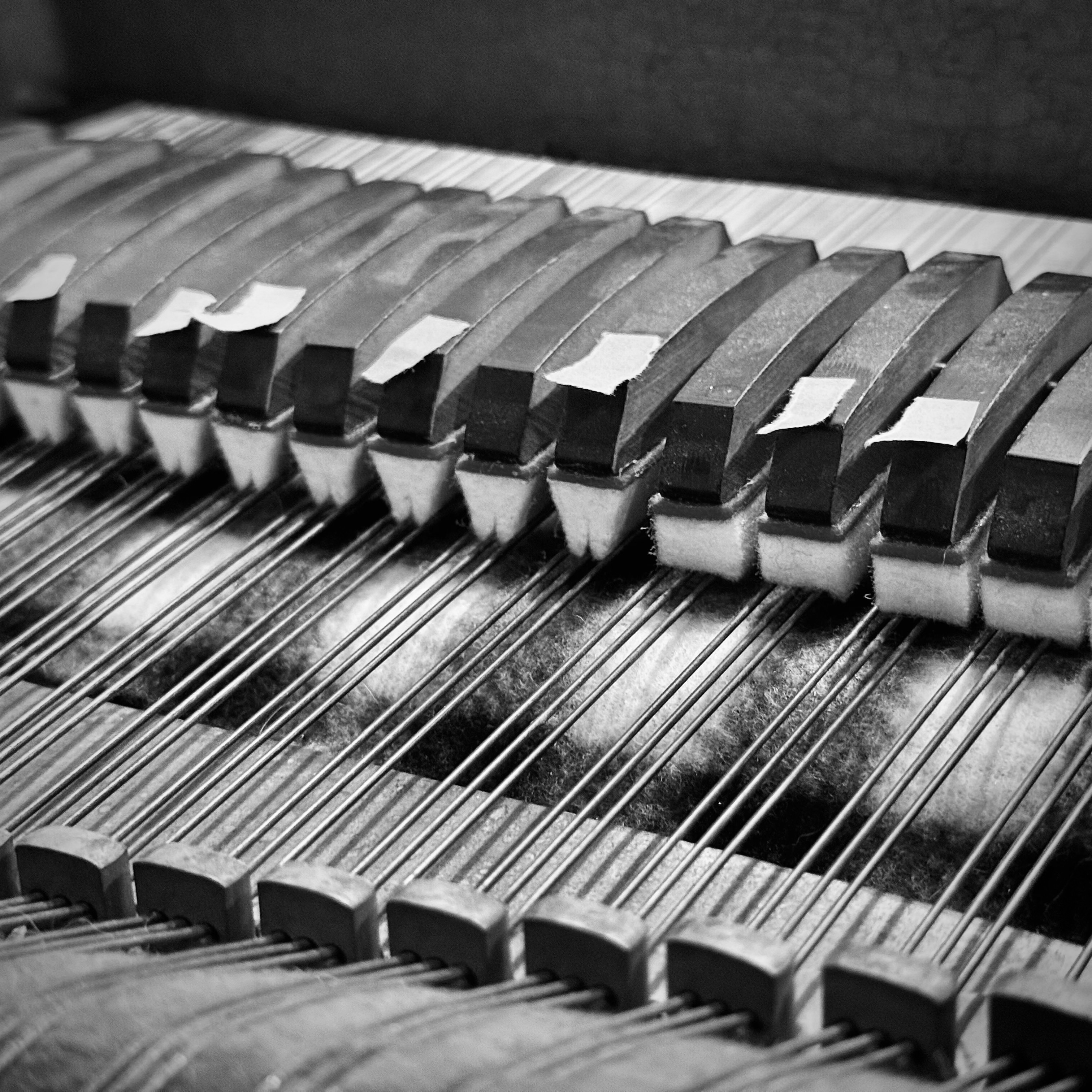Inside - Editing Others’ Music

Today I released a new EP featuring a series of short piano pieces titled “Inside.” The five tracks are each less than three minutes long, performed entirely on the strings inside the piano. I anticipate editing and manipulating these pieces for various purposes in the future. Given the numerous perspectives on sampling and repurposing audio, I’d like to share a bit of what I’ve learned working as a musician in the dance community and observing the broader music industry.
One significant limitation of the piano is its dynamic range—there is a finite limit to how quiet or loud any piano can be played. In a dance class, my role was to extend beyond common instrumental practices to broaden capabilities. Some methods, termed “extended techniques,” exist for every instrument. These techniques enable musicians to surpass traditional virtuosity, creating an ever-expanding sound palette.
The introduction of laptops and speakers in dance studios began with the simple yet transformative volume knob. Often, when classes do not have live accompaniment, volume limitations are the primary reason. I’ve played piano, trumpet, hand drums, and sung for classes but consistently felt restricted by acoustic volume. Sustaining music that encourages rapid momentum at very quiet volumes is particularly challenging. The volume knob significantly expanded my dynamic range, but before its arrival, extended piano techniques were essential.
While limited in dynamic range, the piano excels in pitch range. As a percussion instrument, it boasts 88 tuned pitches covering an orchestral scope and the capacity to sustain multiple pitches simultaneously. With access to hundreds of open strings housed in a large wooden resonator, extended piano techniques significantly expand creative possibilities. I learned these techniques in college and from fellow musicians within the dance community. I’ll share two methods featured on the album—but a general rule applies: never handle instruments aggressively, especially without explicit permission, and especially if the instrument is not your own.
Since many pianos in dance studios are poorly maintained and tuned, I occasionally placed coins between strings to mimic a gamelan ensemble or inserted paper and drumsticks to produce buzzing sounds. Such practices were strictly reserved for already compromised instruments or when I had explicit permission to prevent misunderstandings about damage. Misusing extended techniques can harm instruments and understandably upset people.
Similarly, some musicians feel negatively about their music being edited or manipulated—also a fair sentiment. If you’re unfamiliar with extended techniques applied to audio files, it’s essential to approach this respectfully. It’s crucial to recognize that plenty of resources encourage free audio manipulation, though some musicians, even regarding their own libraries, may not. For many artists, once a piece is finalized, it remains unchanged.
Today, possibilities for sound manipulation are limited only by imagination. Numerous companies distribute audio files intended for free manipulation and integration into new recordings. Many musicians actively participate in licensing music for film and other uses. In our community, I encourage dancers to experiment similarly. Like film production, adaptable tracks that meet project-specific needs become essential. Since my performances were primarily improvised, I learned to capture, engineer, license simply, and distribute music efficiently, continuously expanding my library.
Advancements in software have enabled me to transform almost any sound into another entirely different sound. I teach dancers these techniques, and their creations are extraordinary—not merely gimmicks. For example, a sound recorded from machinery using a phone can become something entirely novel. Hans Zimmer and Finneas create innovative sounds similarly. With limited budgets but abundant creativity, I often delve into my own tracks, extracting brief moments and extending them into standalone pieces.
Here are two gentle, safe extended piano techniques you can try with permission next time you have access to a piano: 1. Hold down the sustain pedal (far-right pedal) and pluck a single string gently with your fingernail. 2. Tap a string softly using the pad of your finger (not the nail).
These techniques, featured on the album, allow even quieter playing than traditional keystrokes. Please feel encouraged to manipulate, edit, and explore beyond simple playback with these tracks. I’m excited to hear the new sounds you create from this music. Music licensing is prevalent, and dancers are among the most experienced licensers I’ve encountered. My priority is encouraging dancers to freely explore and expand their sonic imaginations within a supportive audio landscape.